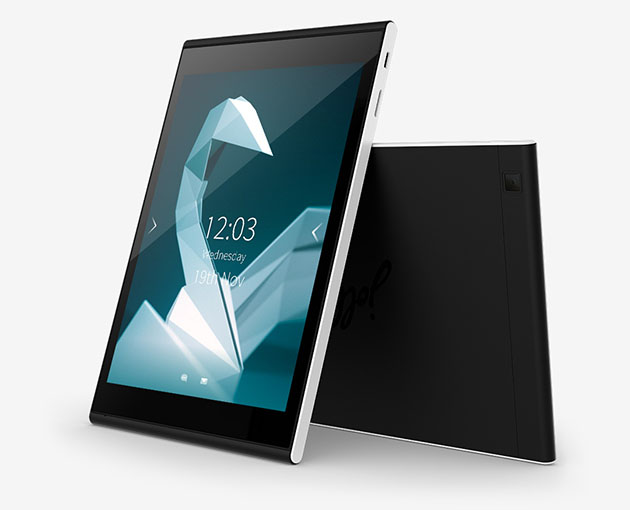Editor’s note: Abayomi sent this in from Helsinki where he is based and involved with technology and startups.
This morning, Jolla’s CEO, Mark Dillon gave an interesting talk on the next stage of the company’s development and launched a tablet running version 2.0 of its Sailfish OS.
Designed in Finland, the Jolla tablet is a rather sleek affair and without buttons on the front panel. Sailfish OS retains its gesture control system as seen on the smartphone, and is capable of running both Sailfish apps and Android apps. Sailfish 2.0 introduces an events view, where notifications are gathered together in one spot, and for switching between alternate themes with task-specific settings built in.
Dillon talked about the Jolla Tablet being “people powered.” Jolla supporters can request features or make suggestions about Sailfish OS 2.0 to the development team. The best will be put to the vote, and the winning ideas prioritized. A similar system was implemented for the Jolla phone, and four of the eight winning ideas were eventually included in the software.
For the tablet, Jolla has opted for a 7.85-inch IPS touchscreen with a 2048 x 1536 pixel resolution, nudging it just beyond the Apple iPad Mini 3 when it comes to pixel density. A 64-bit quad-core Intel processor provides the power, just like Nokia’s new N1 tablet, but here it runs at 1.8GHz. There’s 2GB of RAM, and a total of 32GB internal storage memory, along with a MicroSD card slot. A 5-megapixel camera is mounted on the back of the tablet, and a 2-megapixel camera sits above the display on the front.
It measures 8.3mm thick and weighs 384 grams, and has a 4300mAh battery. This makes the Jolla Tablet slightly heavier than the iPad Mini, and equipped with a smaller capacity battery. However, the price is considerably lower. Jolla has opted to sell the Tablet through the Indiegogo crowd-funding website, where it’s priced at $190 for the first 1000 models, or $200 for the next 1000. If all these are sold, Jolla says it will consider building more if the demand is great enough.
Should the $380,000 goal be met in December, the Jolla Tablet will ship in May 2015.
In other news, SLUSH is quite big this year, with over ten thousand people in attendance from around the world. The biggest of the group would be the one from South Korea, they came in very big. The Smart Content Centre of South Korea came with about 5 startups funded and incubated in a space provided by the South Korean Ministry of Science, ICT and Future Planning under the name, Next Generation Convergence Contents Industry Association.
Speaking with the Manager, Lee, Ji Young, she said the space is provided for the startup community free of charge for a maximum of two years with each startup paying 50% of all the utility bill and on top of that get funding from the government. The space also provides
– Matching with professional consultants to support business activities
– Providing internal and external networking opportunities and PR support
Such program can only mean one thing for South Korea, they mean business and intend to make their voice heard in the tech startup scene.
You should also read: Nigerian startups represent at SLUSH 2014.











